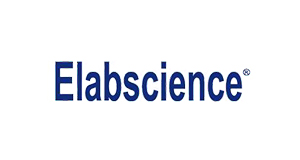Recombinant Mouse alpha-Synuclein/SNCA Protein (His Tag)
Recombinant Mouse alpha-Synuclein/SNCA Protein (His Tag)
Artikelnummer
ELSPDEM100005-20
Verpackungseinheit
20 µg
Hersteller
Elabscience Biotechnology
Verfügbarkeit:
wird geladen...
Preis wird geladen...
Abbreviation: α-Synuclein;SNCA
Target Synonym: Alpha-synuclein;Non-A beta component of AD amyloid;Non-A4 component of amyloid precursor;NACP;Snca
Target Species: Mouse
Expression Host: E.coli
Fusion Tag: N-His
UNIProt ID: O55042
Background: Alpha-synuclein (Snca) belongs to a family of proteins including a-, b-, and g-synucleins. Alpha-synuclein has been found to be implicated in the pathophysiology of many neurodegenerative diseases, including Parkinson's disease (PD) and Alzheimer's disease. Manyneurodegenerative diseases has shown that alpha-synuclein accumulates in dystrophic neurites and in Lewy bodies. The function of alpha-synuclein is closely correlated with its three-dimensional structure, especially for proteins important in the pathogenesis of neurodegenerative diseases. Alpha-synuclein is a dynamic molecule whose secondary structure depends on the environment. For example, it has an unfolded random coil structure in aqueous solution, forms a-helical structure upon binding to acidic phospholipid vesicles, and forms insoluble fibrils with a high b-sheet content that resemble the filaments found in Lewy bodies. Also, alpha-synuclein was known to associate with 14-3-3 proteins including protein kinase C, BAD, and extracellular regulated kinase, and overexpression of alpha-synuclein could contribute to cell death in neurodegenerative diseases.
Sequence: Met1-Ala140
Purity: > 95 % as determined by reducing SDS-PAGE.
Formulation: Lyophilized from a 0.2 um filtered solution of 20mM PB, 150mM NaCl, pH 7.4.
Normally 5 % - 8 % trehalose, mannitol and 0.01% Tween80 are added as protectants before lyophilization.
Please refer to the specific buffer information in the printed manual.
Endotoxin: < 1.0 EU per ug of the protein as determined by the LAL method.
Target Synonym: Alpha-synuclein;Non-A beta component of AD amyloid;Non-A4 component of amyloid precursor;NACP;Snca
Target Species: Mouse
Expression Host: E.coli
Fusion Tag: N-His
UNIProt ID: O55042
Background: Alpha-synuclein (Snca) belongs to a family of proteins including a-, b-, and g-synucleins. Alpha-synuclein has been found to be implicated in the pathophysiology of many neurodegenerative diseases, including Parkinson's disease (PD) and Alzheimer's disease. Manyneurodegenerative diseases has shown that alpha-synuclein accumulates in dystrophic neurites and in Lewy bodies. The function of alpha-synuclein is closely correlated with its three-dimensional structure, especially for proteins important in the pathogenesis of neurodegenerative diseases. Alpha-synuclein is a dynamic molecule whose secondary structure depends on the environment. For example, it has an unfolded random coil structure in aqueous solution, forms a-helical structure upon binding to acidic phospholipid vesicles, and forms insoluble fibrils with a high b-sheet content that resemble the filaments found in Lewy bodies. Also, alpha-synuclein was known to associate with 14-3-3 proteins including protein kinase C, BAD, and extracellular regulated kinase, and overexpression of alpha-synuclein could contribute to cell death in neurodegenerative diseases.
Sequence: Met1-Ala140
Purity: > 95 % as determined by reducing SDS-PAGE.
Formulation: Lyophilized from a 0.2 um filtered solution of 20mM PB, 150mM NaCl, pH 7.4.
Normally 5 % - 8 % trehalose, mannitol and 0.01% Tween80 are added as protectants before lyophilization.
Please refer to the specific buffer information in the printed manual.
Endotoxin: < 1.0 EU per ug of the protein as determined by the LAL method.

 English
English










